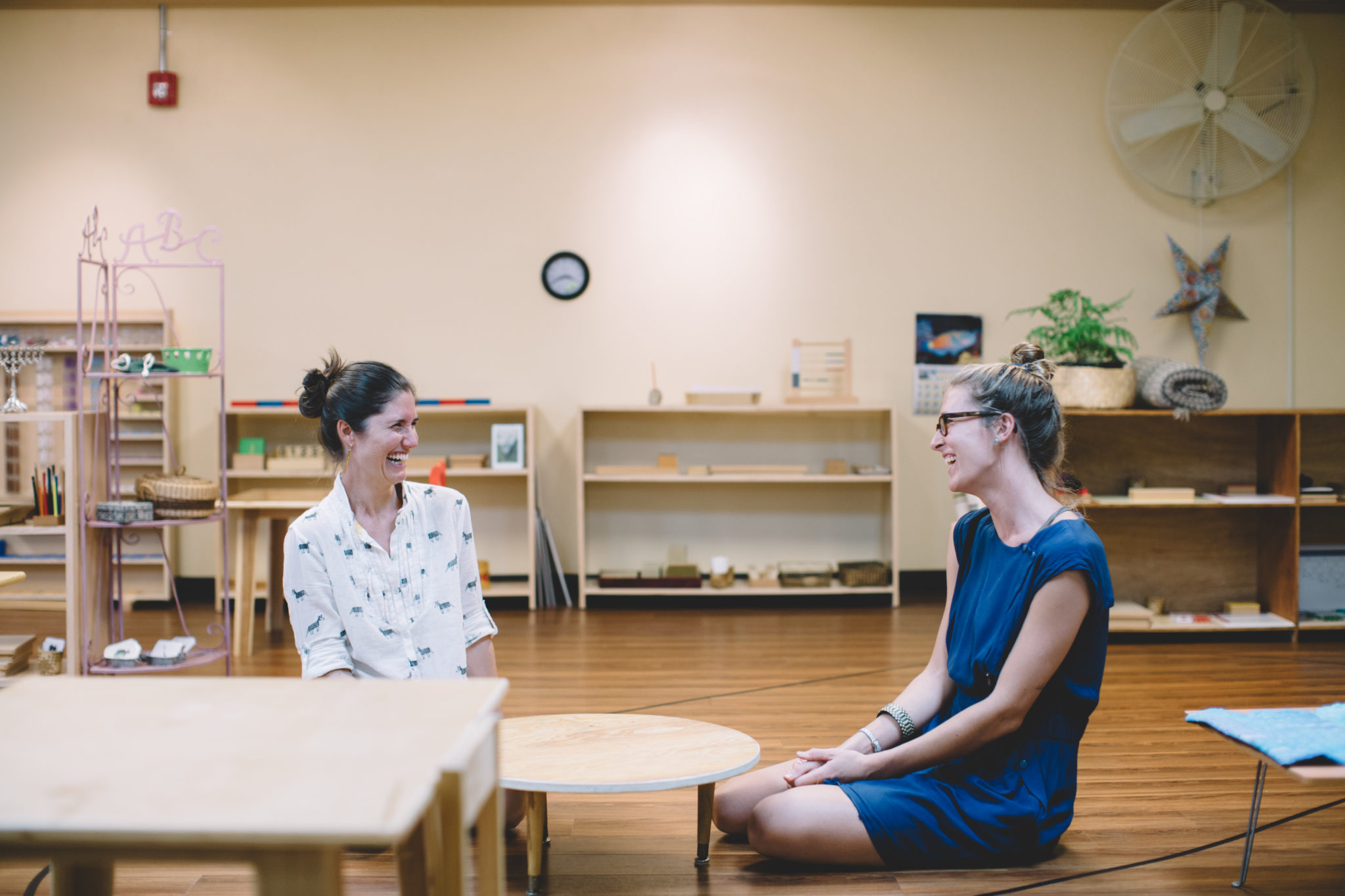One of a four-part series featuring different types of human bonds: The Human Bond
Images by John Hook & Jonas Maon
At Mo‘O School in Mānoa, two women move around a large, open classroom with deliberate, graceful movements. Over the last three years, the two have grown exceptionally close while working in tandem to open the school, which welcomed its first class in September 2015. Sitting on the floor around them—calm, focused faces gazing up—are about a dozen small children (including the author’s daughter) who make up the inaugural student body of this newest Montessori of O‘ahu school.

Molly Jenkins and Mamie Lawrence Gallagher, the school’s founders, met in 2012, when Gallagher’s daughter was a student of Jenkins’s at another Montessori school, Hoaloha o ke Kai, which closed in 2013. Founded by Maria Montessori in 1907, these schools teach students based on a model known as the Montessori Method, which capitalizes on the natural development of children, teaching via sensory experiences within mixed-age classrooms (ages 3 to 6 being primary, and ages 6 to 12 elementary). The teachers, called guides, are trained to recognize their students’ stages of developmental progression and, using observation and lessons, to nurture each child based on his or her individual needs.
Though not equals on paper (Gallagher is the school’s director and teaches the elementary class, while Jenkins helms the primary group), the pair describes their working partnership as one based on a unity of purpose and shared responsibilities. “I knew I could not do it alone,” says Gallagher, for whom opening a school had been a long-held aspiration. “Having Molly made me braver than I would have been.”

To which Jenkins responds: “I feel inspired by you. I like that you take action and that you’re compassionate. It reflects what I want for the children.” The partners’ modeling of a healthy, caring adult relationship supports the Montessori curriculum, in which social development is equal to academic development.
“The children can see that we are kind to each other,” Gallagher says. “I see a companionship as a deeper friendship, marked by civility, kindness, and grace. Those are qualities that we try to help the children find within themselves.”
This story is part of our Companions Issue.

